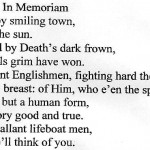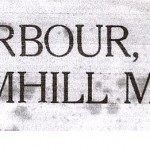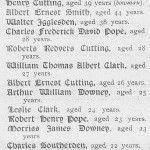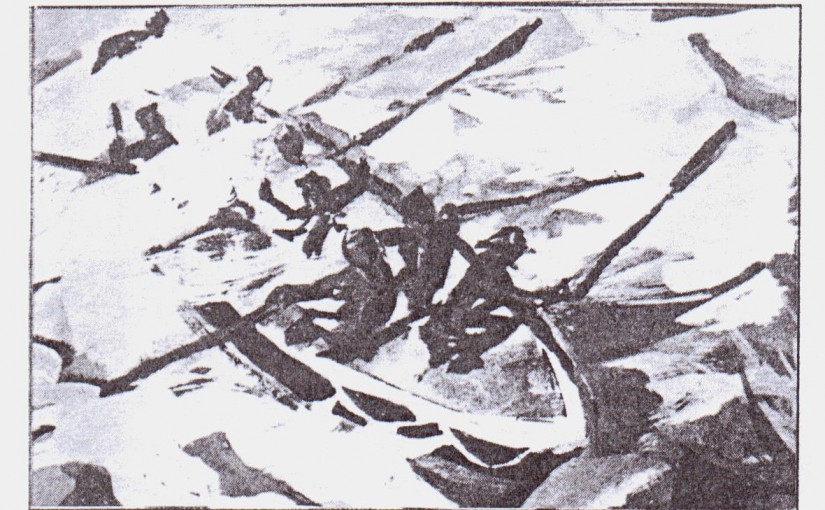Seventy-Six years ago the terrible lifeboat disaster hit the small community of Rye Harbour and claimed seventeen lives.
A copy of the Rye Harbour, Camber & Broomhill Magazine for December 1928 has been loaned to us by Paul Kennedy, a relative of one of the lifeboatmen lost on the Mary Stanford, who is researching the disaster and looking for more information and memorabilia. “Rye’s Own” will be happy to forward any such information or memorabilia on to Paul and help him in his endeavours.
The rest of this page is devoted to pieces taken from the magazine and a poem by twelve year old Florrie Prockter of Margate who had visited Rye every summer for a number of years and was friendly with the lifeboat crew.
Editorial
My Dear People
During the past month out little village has been contributing a portion of the great history of our land, and it is a portion of which none of us will ever be ashamed.
About five o’clock on the morning of the Thursday, November 15th, out lifeboat was called out to rescue the crew of the “Alice” of Riga. Our men turned out with the same willingness which has always marked their service in the boat, and in the face of a driving storm the lifeboat was with much difficulty launched. Only a few minutes after the boat got away a message was received that the services of the lifeboat would not be required, as the crew of the “Alice” had been picked up by the German steamer “Smyrna”.
Unfortunately, owing to the darkness, it was impossible to signal this message to the lifeboat, and after several hours of fruitless search the boat was returning to the Harbour when she capsized within sight of home, with the loss of all the 17 men of her crew. We shall never know the real circumstances of the disaster, but we do know that our Harbour men responded to the call of duty, and over a wind-swept marsh and through the howling storm they went to the rescue of their fellow- men.
We have been bowed with sorrow, but we have been touched with pride, and we feel that another Roll of Honour has been added to the one already earned in the Great War.
As soon as the news of the disaster reached the village, a party of men immediately went out to Broomhill and Jury’s Gap with ropes and other helps. Police and members of the Rye St. Johns Ambulance Association were also soon on the spot, but it was all to no purpose. Gradually the sea gave up 15 of the bodies on various parts of the coast, and although everything was done that was humanly possible in the way of artificial restoration, it is our sad duty to relate that not a single life was saved. Up to the time of writing, the bodies of Henry Cutting and Jackie Head have not been recovered, but hopes are still held that they may be found. The Inquests It was necessary to hold two inquests; one for the bodies found on the Sussex Coast, and another for those found in Kent, and in both cases the same verdict was found – “death by accidental drowning”.
The Funeral
The funeral was held on Tuesday afternoon, November 20th, and surely that day will never be forgotten by those who saw it. The weather was fine, but overcast, a very fitting setting for such a sad event. The village was soon invaded by motor cars, buses, and crowds of people, and aeroplanes circled round the church and across the route of the procession. The funeral was attended by Viscount Curzon, the Latvian Consul, 12 Clergy, including three previous Vicars of the parish, representatives of the Free Churches and Salvation Army, officials of the Royal National Lifeboat Institution, a large detachment of the British Legion under the command of Lieut-Colonel Irvine, the Rye St. John Ambulance Association, and Lifeboat men from Hastings, Dungeness, Folkestone, Ramsgate, Hythe, Selsey Bill, Newhaven and Brighton.
The procession was marshalled by Captain Leslie, and Mr. Frank Caister, Sen, arranged the positions of the mourners. The Rye Town Band led the procession, and on the way to the church, the hymn, “Abide with me” was played. The Band also accompanied the hymn, “Jesus Lover of my soul”, at the grave side.
Each one of the 15 coffins was covered with a Union Jack, provided by the kindness of Mr. Cordery, and there were more than a thousand floral tributes. Owing to the greatness of the crowd it was impossible to use the church, and the whole service was taken at the grave side. The service was divided between the Rev. John Fowler, Vicar of Rye, and myself. Mrs. Tate’s gardener of Hilden, Rye, had most kindly decorated the grave with evergreens and flowers and the beautiful effect made one think of a garden of sleep. It did not seem as if our heroes were being put into an ordinary grave. IT looked like a garden of rest. Never before have I stood by such a beautiful grave, and never before have I attended a funeral where the respect of the dead seemed so universal or more real. Everyone seemed to recognize we that were laying aside a band of brave men who had given their lives in an attempt to save the lives of others, and they were honoured for what they were. Their names will be held in honourable remembrance for many, many years to come.
From the November 2004 Issue of “Rye’s Own”
All articles, photographs, films and drawings on this web site are World Copyright Protected. No reproduction for publication without prior arrangement. (Hard Copy Back Numbers Still Available) © World Copyright 2017 Cinque Ports Magazines Rye Ltd., Guinea Hall Lodge Sellindge TN25 6EG.
